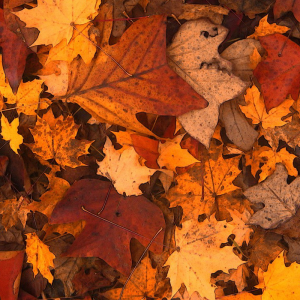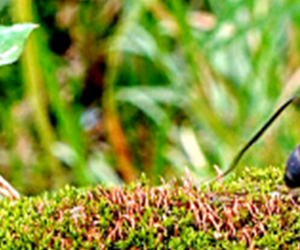Nature Notes – Spiders
Let’s face it: spiders don’t have a very good press. They have an image problem. Some people fear them, others dislike them, and some outright hate them. This is unjust and unfair, because we all benefit from their presence.
In fact, spiders are very useful and play a vital role in ecosystems. They kill pests, aphids and other plant-sucking insects. They control flies, beetles and grasshoppers but leave alone pollinating insects. Thus, they are a gardener’s best friend, according to biodiversity expert Cameron Smith. We should respect them. As we shall see, they are also very interesting creatures that have a few neat tricks up their eight hairy legs.
They are a food source for many animals, forming an important link in the food chain. Many species of birds and other predators feed exclusively on spiders. Without spiders, insect populations around the world would explode, food crops would be obliterated, and insect-borne diseases would skyrocket. Spiders eat tons of insects every year.
Spiders live among us in almost every conceivable habitat. Evolution has equipped them with a myriad of techniques for capturing insect prey: jumping spiders leap, crab spiders ambush, wolf spiders give chase and web-weaving spiders entrap. No other group of animals has been hunting insects so efficiently for so long. But they also have predators: birds, toads, frogs, ants, wasps, and centipedes.
Scientists say there are 42,000 known arachnids and probably another 40,000 yet to be identified species; 1,500 species live in Ontario. Spiders can be daunting to identify as the colour of a species is often quite variable, even when mature, while immature spiders are sometimes very different than adults. Males and females of the same species may be similar or quite different in coloration and size.
Males are slightly or much smaller than females. Most spiders have eight legs and eight eyes – two main eyes that focus on details within a small field of vision, and six secondary eyes that detect patterns of light and dark. However, they generally have poor eyesight. Most spiders lay their eggs in a finely woven silk web and take off, letting the eggs fend for themselves – but not the wolf spider. Wolf spiders strap their eggs to themselves and carry them around for up to 10 days. Once the little ones hatch, female wolf spiders continue to care for them, even letting them hitch a free ride on their backs until the young are old enough to care for themselves.

Jumping Spider
All spiders are poisonous, but 99% of them are harmless to humans. Almost all spin silk of different kinds, 1/100th the diameter of human hair, but twice as strong as steel, stretchable and elastic. Spiders use silk for lining their burrows, protecting their egg sacs, anchoring themselves with safety lines, and of course, building webs – either orb webs, mesh webs, cobwebs, sheet webs or funnel webs. Spider silk is also used by some birds for nest-building. Spider webs can contain more than 60 meters of silk, some contain more than 3,000 attachment points, and spiders eat part of their old webs to produce silk for new ones, so they are recyclers by nature. The remarkably durable, tough and flexible spider silk is currently being used to drive advances in medicine, and bioengineers have developed ways to turn the protein found in spider silk into a biodegradable adhesive to repair broken bones. But not all spiders spin webs. Many simply hunt for their prey or lurk in dark corners waiting for their prey to come to them.
Spiders native to Southern Ontario include the black and yellow garden spider, found in gardens and orchards, and considered Toronto’s unofficial spider; the zebra jumping spider, hunting on walls and fences; the common house spider; the northern black widow spider, feeding on insects as well as on millipedes and centipedes; the orchard orbweaver, that prefers bushes and low trees in moist, wooded areas; and the cellar spider, also known as daddy-longlegs or harvestman.
The most common spiders in our area are the orbweavers. They construct ornate, expansive, vertical bug nets, up to 75 cm wide. They sit in the centre of these spirally-ringed sticky silk webs in sunny but sheltered spots, waiting for their prey, which sticks to the spider net. But how come that spiders don’t stick to their own webs when the walk on them? That’s another one of their neat tricks. A spider begins by attaching a single strand of silk horizontally between two supports. It then builds an outside rim, like a bicycle wheel, and then attaches spokes and a spiral from the centre to the outside of the web. These parts of the web are all composed of non-sticky silk. With this frame firmly in place, the spider adds the sticky strands, once again in a spiral pattern. It then connects this spiral to the non-sticky spokes. So when the spider runs across from the centre to grab a prey, it travels along the spokes, stepping on the bits that are not sticky.
The male mating instinct can affect the quality of the web. Male orbweavers can build proper webs as juveniles, but as soon as they become adults, their attention is elsewhere. At that stage they make lousy webs because they don’t want to waste time and rather grab some dinner. Then they hang around females waiting for a chance to mate – keeping, of course, to the non-sticky threads. They serenade a potential mate by plucking a tune on a female’s web. Most Ontario spiders mate in early summer and then wrap their eggs in cocoons. Soon after hatching, the tiny spiderlings swarm to the tops of plants or shrubs and spin a thin thread of silk which catches in the slightest breeze and lifts them up into the air. This is called “ballooning” and in Ontario it occurs in autumn. This manoeuvre distributes them over wide distances and keeps the spider population from becoming too concentrated in one area. As night falls, the silk becomes laden with moisture and the tiny paratroopers drop back to the earth.
The ant-mimic jumping spider is rewriting natural history after scientists discovered that it produces milk and suckles its young for up to 40 days. The fluid secreted by these spiders is four times as nutritious as cow’s milk. Feeding continues long after the little spiderlings can forage on their own. It probably evolved during a period when food was scarce.



